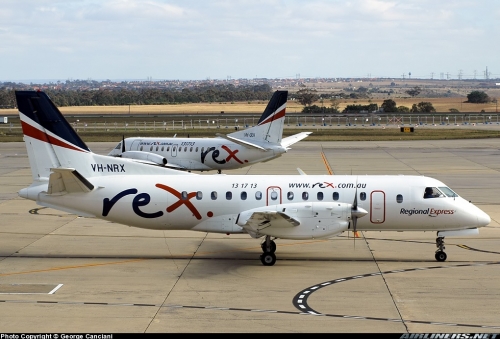Many of Australia’s regional airports are struggling to cope with increased infrastructure costs and heightened regulatory requirements.
There are about 2000 landing strips across Australia, about 400 of them aerodromes with civilian aviation operations. About 250 provide regular public transport services that catered in 2016-17 for more than 360,000 flights and 15 million passengers.
Most are owned and operated by local government bodies and are seen as essential by their communities.
Across Australia, they house more than 500 aircraft available for fire-fighting duties and cater for over 6,000 emergency evacuations a year.
READ: Dramatic Aussie propeller loss prompts industry changes.
They also contribute $A260m directly to regional Australia annually, employing 1700 full-time workers and supporting an additional 2750 jobs.
But a report by the Australian Airports Association released last year confirmed that most regional airports faced an increasing struggle to maintain critical assets.
The report found more than 60 percent of regional airports operate at a loss and four out of 10 expected to remain in the red for the next 10 years.
Operating costs were expected to increase by 38 percent over the next decade, producing an infrastructure shortfall of more than $A170m.
Aging aeronautical infrastructure, much of it more than 70 years old, and the need for costly upgrades to meet modern aviation standards make up part of the problem.
Airports are becoming more expensive to operate as safety and security requirements increase.
While the Australian government has agreed to fund new equipment required to meet increased security levels, it is not underwriting the costs of staffing, operating and maintaining that equipment.
“The local governments that own and operate most of our regional airports do not have in-house expertise to maintain and upgrade aviation infrastructure,’’ AAA chief executive Caroline Wilkie said in a recent blog.
“So when updates are required, expertise and equipment needs to be sourced from other locations.
“At the same time, the relatively small size of regional airports mean effective economies of scale for maintenance and upgrades simply cannot be achieved.
“This means airport works – from basic maintenance projects to major upgrades – are more expensive for regional airports than their capital city counterparts.”
Also a problem is the limited income regional airports get from aeronautical charges. Even those with airline services have far lower passenger numbers than their profitable big-city counterparts and often lack the market power to insist on fees that adequately cover costs.
An AAA survey found many regional airports had been pressured by airlines to reduce charges and that 75 percent had either maintained or reduced charges in real terms over the past five years.
In a bid to address the funding problem, the AAA was successful in lobbying for an extension of the Remote Airstrip Upgrade Program (RAUP) in the 2018-19 federal budget.
However, here was no additional funding for those not qualifying under the RAUP but still struggle with the cost of maintaining their airports.
Wilkie at the time described the budget allocation as welcome recognition of the important role airports play in their communities.
“This funding will help ensure remote airports can keep their infrastructure safe and fit-for-purpose, connecting their community to essential emergency services, loved ones and services only available in larger regional and metropolitan centres,’’ she said.
“Unfortunately, regional airports not eligible for RAUP funding have been left out of this year’s budget and we will continue our campaign to support them in the year ahead.”
A senate committee is also looking at the operation, regulation and funding of air services to rural, regional and remote communities and is expected to report in December.
Steve Creedy contributes to the AAA’s The Airport Professional blog.
























